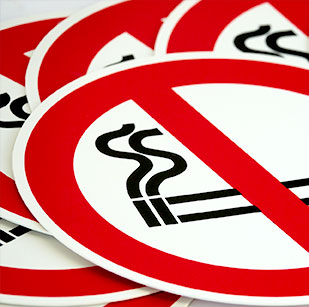Standing out isn’t easy, especially if you’re going up against tough competition from established brands. If you want your products to get noticed on the shelves, the design of your labels is key; they not only have to help set your product apart from those around it, they need to communicate your brand values and clearly express what makes your company unique.
Nowhere is this more important than on a premium, high-end product. If your customers are paying a little more money, they don’t just expect a quality product that performs well - they expect it to look and feel distinctly ‘premium’ too. To help you capture the right audience, we’ve put together a quick guide to designing a premium product label.
Below, we’ll run through seven top product label design tips to help you create premium labels that stand out on the shelves and pull your customers in.
Study the competition
The definition of the word ‘premium’ varies depending on the sector you’re in. For instance, the way you’d market premium walking boots is entirely different from the approach you’d take if you were marketing premium skincare or makeup. That’s because the things that make a walking boot ‘premium’ aren’t the same things that make cosmetics ‘premium’.
It’s important to bear this in mind when you’re creating your label design - and there’s no better way to find out how premium products are marketed in your industry than by taking a look at the competition. Study the businesses you’re competing against to see how they design their labels, then try to create something better! Make a note of any shortcomings you spot on your competitors’ labels and try to address these with your design.

Study your audience, too
It’s not just the sector that affects the way premium products are marketed: it’s the audience too. Everyone’s definition of the word ‘premium’ is a little different. Some might consider a mid-range product to be a premium offering, while others will only settle for something top-of-the-range.
So, when you’re creating a label for your product, make sure you understand your audience (and their expectations) inside out. Learn their ‘pain points’ and try to understand what matters most to them and what appeals to them. The more you understand your audience, the better you’ll be able to tailor your product labels to suit their preferences.
Refine your branding
At the core of any great product label design is a great brand. Quality content and high-gloss finishes alone won’t necessarily scream ‘premium’ - your brand has to give off the right impression too. If you’re looking to take your products upmarket for the first time, you might want to consider revisiting your branding or developing an alternate variation of it for your more high-end products.
Create a cohesive design
Mismatched fonts, incompatible colours or a haphazard layout will immediately undermine the premium feel you’re trying to aim for. Your label design has to be cohesive. Customers’ expectations are higher than ever, and subpar design simply won’t cut it any more.
If you have to use a combination of different fonts (as most product labels do), make sure you select fonts that pair well together. And don’t be tempted to try and cram too much information onto your label: if there’s more that you’d like to say, you can always direct customers to your website by adding a link or QR code to the label.
For more inspiration, or to find out more about using fonts in an effective way on your labels, check out our blog, 'Choosing A Font For Your Label: Our Top Tips'
Work on your messaging
By selecting a refined, tasteful colour palette and an elegant, timeless typeface, it’s relatively easy to design a label that looks premium at a glance. But there’s more to a label than just the way it’s designed: what it says matters a great deal, too.

If you’re serious about giving your products a premium feel, you’ll need to write content that aligns with this objective. Emphasise your brand values and showcase what makes you different - things like sustainability perhaps, or the fact that your products are made in the UK. If you have space, share a little bit about the history of your company. The story behind your brand can not only pull customers in, it can help you connect with them on an ongoing basis and transform them into repeat customers.
The bottom line is this: it’s not enough for a product label just to look the part. It has to convince consumers that the product itself is high-quality.
Choose your finishes carefully
So, you’ve nailed down your design and it looks great in the two-dimensional digital world. But what about when you get the design printed and apply it to products for the first time? Will it still hold up?
If you choose the wrong type of label material or don’t specify the right finish, it’s highly likely that your design will fall flat. Make sure you request samples beforehand and test out different materials and finishes to find your preferred option.
Work with a supplier you trust
The final piece of the puzzle is your supplier. Who are you going to entrust with the responsibility of printing your labels once the design has been finalised? It’s important to choose carefully, because a premium label won’t look quite so premium if it’s poorly produced: you need to work with a supplier you can trust.
Why not speak to the team here at Flexi Labels? With more than 20,000 happy customers across the UK and Europe, an in-house design team and a vast array of different label materials and specialised finishes to choose from, we’re here to help with all your label-related needs. We even stock a range of pre-printed label designs, including promotional labels and retail sales labels.
To discover more about us or discuss your requirements with a member of our team, check out our FAQs page or get in touch with us today.































